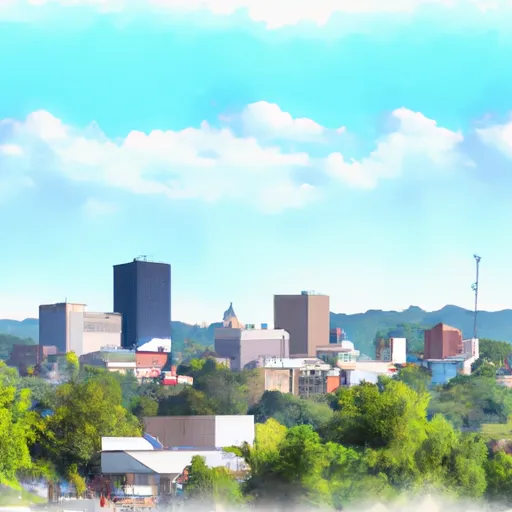-
 Snoflo Premium
Snoflo Premium
Get unlimited access to all our content
With no Ad interruptions! - Start Your Free Trial Login with existing account
Lake-City
Eden Index
Climate
8.1
•
Recreation
1.1
•
Community
1.8
•
Safeguard
4.1/10

Lake City is a small town located in Craighead County, Arkansas. It experiences a humid subtropical climate characterized by mild winters and hot, humid summers. The average temperature in Lake City ranges from 40°F in January to 90°F in July, with precipitation occurring throughout the year.
The town is surrounded by various water bodies, including Bayou DeView, Cache River, and Buffalo Island. These hydrology constituents contribute to the town's natural beauty and provide ample opportunities for outdoor recreation. Fishing enthusiasts can enjoy catching bass, catfish, and crappie in the local waterways. Boating and kayaking are also popular activities, allowing visitors to explore the serene surroundings and observe the diverse wildlife.
Lake City offers several outdoor recreational opportunities, with nearby Crowley's Ridge State Park being a popular destination. The park features hiking trails, picnic areas, and camping facilities, providing visitors with opportunities to immerse themselves in nature and enjoy the area's scenic beauty. Additionally, the town's proximity to the Mississippi River allows for boating and bird-watching experiences.
Overall, Lake City's climate, hydrology constituents, and outdoor recreation opportunities make it an appealing destination for nature lovers and outdoor enthusiasts looking to enjoy Arkansas's natural splendor.
What is the Eden Index?
The Snoflo Eden Index serves as a comprehensive rating system for regions, evaluating their desirability through a holistic assessment of climate health, outdoor recreation opportunities, and natural disaster risk, acknowledging the profound impact of these factors on livability and well-being.
Climate Health Indicator (CHI): 8.1
Lake-City receives approximately
1219mm of rain per year,
with humidity levels near 84%
and air temperatures averaging around
16°C.
Lake-City has a plant hardyness factor of
7, meaning
plants and agriculture in this region tend to thrive during the non-winter months.
By considering the ideal temperature range, reliable water supplies, clean air, and stable seasonal rain or snowpacks, the Climate Health Indicator (CHI) underscores the significance of a healthy climate as the foundation for quality living.
A healthy climate is paramount for ensuring a high quality of life and livability in a region, fostering both physical well-being and environmental harmony. This can be characterized by ideal temperatures, reliable access to water supplies, clean air, and consistent seasonal rain or snowpacks.
Weather Forecast
Streamflow Conditions
St. Francis
Area Rivers
St. Francis
Snowpack Depths
St. Francis
Reservoir Storage Capacity
St. Francis
Groundwater Levels
Recreational Opportunity Index (ROI): 1.1
The Recreational Opportunity Index (ROI) recognizes the value of outdoor recreational options, such as parks, hiking trails, camping sites, and fishing spots, while acknowledging that climate plays a pivotal role in ensuring the comfort and consistency of these experiences.
Access to outdoor recreational opportunities, encompassing activities such as parks, hiking, camping, and fishing, is crucial for overall well-being, and the climate plays a pivotal role in enabling and enhancing these experiences, ensuring that individuals can engage in nature-based activities comfortably and consistently.
Camping Areas
| Campground | Campsites | Reservations | Toilets | Showers | Elevation |
|---|---|---|---|---|---|
| Tickfaw State Park | None | 15 ft | |||
| Greenville - Lake Wappapello | None | 382 ft | |||
| Lake Lincoln State Park | None | 426 ft | |||
| Sulphur Springs - Lake Wappapello | None | 391 ft | |||
| Percy Quin State Park | None | 416 ft | |||
| St. Peters 370 Lakeside Park | 50 | 426 ft | |||
| Mississippi Petrified Forest | 15 | 294 ft | |||
| Pere Marquette State Park | 80 | 644 ft | |||
| St. Francois State Park | None | 777 ft | |||
| Bogue Chitto Water Park | None | 276 ft |
Nearby Ski Areas
Catastrophe Safeguard Index (CSI):
The Catastrophe Safeguard Index (CSI) recognizes that natural disaster risk, encompassing floods, fires, hurricanes, and tornadoes, can drastically affect safety and the overall appeal of an area.
The level of natural disaster risk in a region significantly affects safety and the overall livability, with climate change amplifying these risks by potentially increasing the frequency and intensity of events like floods, fires, hurricanes, and tornadoes, thereby posing substantial challenges to community resilience and well-being.
Community Resilience Indicator (CRI): 1.8
The Community Resilience Indicator (CRI) recognizes that education, healthcare, and socioeconomics are crucial to the well-being of a region. The CRI acknowledges the profound impact of these elements on residents' overall quality of life. By evaluating educational resources, healthcare accessibility, and economic inclusivity, the index captures the essential aspects that contribute to a thriving community, fostering resident satisfaction, equity, and social cohesion.

